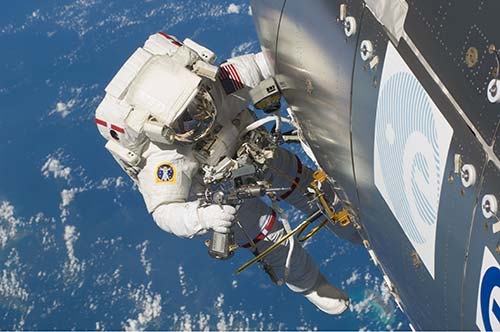
The Columbus AIS (COLAIS) experiment began in June 2010, detecting signals from Automatic Identification System (AIS) units, mostly carried on a mandatory basis by all commercial vessels.
The experiment was to verify how AIS signals propagate up to Earth orbit and investigate the usability of an in-orbit AIS detecting satellite as a supplement to terrestrial AIS infrastructure. The latter has a limited range, and a satellite constellation would be complementary to cover blind spots in open oceans.
The exploitation of this technology in a fully deployed space based system will improve the safety for ocean-going vessels in open sea, and also simplify the identification and coordination of vessels in a search and rescue situation. In addition it can be used for monitoring vessels carrying hazardous cargo and for other environmental risk assessment situations.
Since the start of the operation, NORAIS has worked as expected, and been operational for over 213 weeks, with only 5 weeks of downtime due to experimentations and other external factors.
Several enhancements are made to NORAIS 2, most important is the signal processing and sensitivity in the receiver.
The original NORAIS receiver with its reconfigurable software defined radio architecture has been a perfect platform for KONGSBERG to demonstrate continuous in orbit improvements. Via in-orbit upgrades, KONGSBERG and FFI have gained an impressive increase in global vessel detection, and as an example more than doubled the detection percentage in the Mediterranean Sea. NORAIS 2, with its enhancements, will improve this even further.
"NORAIS 2 is KONGSBERG's third generation SAT-AIS receiver and contains new hardware featuring large mass memory for digital sampling, higher sensitivity and better robustness against interferers", says Frode Storesund, Project manager, Kongsberg Seatex AS. "The digital platform is optimized for maximizing signal processing capabilities at low power and miniaturized size. This facilitates highly advanced algorithm capabilities which are prerequisite for a next generation SAT-AIS receiver."
"Together with the Norwegian satellites AISSat-1 and AISSat-2 the deployment of the NORAIS 2 demonstrate a leading range of technological solutions for space based AIS" says Gard Ueland, President of Kongsberg Seatex AS. "We are proud to once again have the opportunity to provide our cutting edge technology to such a prestigious project, a technology that also benefits our customers in a wide range of products in our more traditional, maritime markets."
The COLAIS experiment is a cooperation between NASA, ESA, Norwegian Defense Research Establishment (FFI), Norwegian Space Centre and Kongsberg Seatex AS.